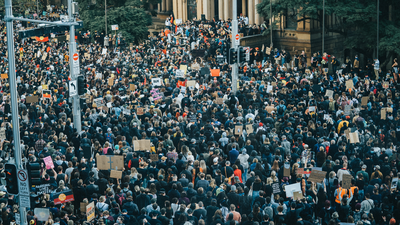Alberta’s students turn protestors as government forces teachers back to work: Here’s what has happened so far

The chants outside Alberta’s high schools this week were not about exams or sports victories, they were about power, protest, and principle. On Thursday, thousands of students across Alberta walked out of classrooms, flooding streets in Calgary and Edmonton to condemn what they saw as a betrayal of democracy and education alike. Their anger was directed squarely at Premier Danielle Smith’s government, which invoked the notwithstanding clause to force teachers back to work after a nearly month-long strike that had paralyzed the province’s public education system.The strike had begun on October 6, when more than 46,000 teachers walked off the job after negotiations with the United Conservative Party (UCP) government collapsed. The educators were demanding smaller class sizes, more hires, and an end to what they called a “two-tier system” that prioritised private institutions through millions in subsidies. For weeks, classrooms stood empty while picket lines buzzed with defiance. By the time the government pushed through back-to-work legislation on Monday, shielded from Charter scrutiny, teachers were forced to accept a deal that nearly 90 percent had already rejected.The return to school on Wednesday might have signalled resolution, but by Thursday, it had become a catalyst. From Western Canada High to St. Mary’s and Crescent Heights, the student walkouts multiplied like wildfire. Teenagers who had watched adults wage a legal and moral battle over their education took to social media, organised within hours, and reclaimed the public square. They said they were tired—tired of being pawns in a political chess game, tired of sitting in classrooms crammed with forty or more students, and tired of watching teachers burn out under impossible conditions.
A strike that laid bare Alberta’s fault lines
Behind the noise of Thursday’s march lies months of mounting tension. The teachers’ strike was never just about salaries. It was about what kind of future Alberta was willing to pay for. The government’s refusal to cap class sizes, despite rising enrolment and vanishing resources, became a flashpoint. According to media reports, union leaders had warned early on that chronic underfunding was pushing educators to a breaking point. In major cities, classrooms were bursting, with teachers struggling to give even minimal attention to students.But the dispute also cracked open a deeper fault line: Alberta’s growing investment in private education. Provincial funding for private schools surged even as public institutions begged for more staff and support. The imbalance fed a growing sense among public educators that the system was being hollowed out by ideology, one that prioritised parental choice over public good.When the Smith government wielded the notwithstanding clause, it signalled something beyond policy, a willingness to override constitutional protections to quell dissent. Legal scholars have described the move as part of a troubling trend across Canada, where governments are increasingly using the clause as a political weapon rather than a constitutional safeguard. For Alberta’s teachers, it was the final blow; for students, the spark.
The students’ rebellion
The youth-led walkout, echoing through downtown Calgary and beyond, marked a generational moment. The students’ grievances mirrored those of their teachers: Larger classes, fewer supports, and a government that seemed indifferent to the chaos unfolding in schools.Many of them carried handmade placards denouncing the UCP’s decision. The walkout, far from being orchestrated by unions or political groups, was a spontaneous act of solidarity that highlighted the disconnect between the government’s narrative and the lived reality inside schools. Education Minister Demetrios Nicolaides dismissed the movement as small and noisy, insisting that most students wanted to return to normalcy. Yet Thursday’s scenes suggested otherwise, an unmistakable display of civic consciousness from a generation often accused of political apathy.
Beyond the classrooms, a larger reckoning
The standoff has now become a referendum on Alberta’s education priorities. In the short term, teachers are back in classrooms and students back at their desks. But the anger simmering beneath that enforced normalcy hints at deeper unrest. According to media reports, Alberta’s education crisis cannot be untangled from the province’s broader ideological tug-of-war—between austerity and investment, between parental control and public accountability, between constitutional restraint and political expediency.Premier Smith’s decision to invoke the notwithstanding clause may have ended a strike, but it also ignited a new debate about democracy’s limits and the cost of silencing dissent. In the hands of teenagers marching through cold Alberta streets, that debate now has a face, and a future.Because what began as a teachers’ strike has evolved into something larger: A collective reckoning over who gets to shape Alberta’s classrooms, and by extension, its conscience.






